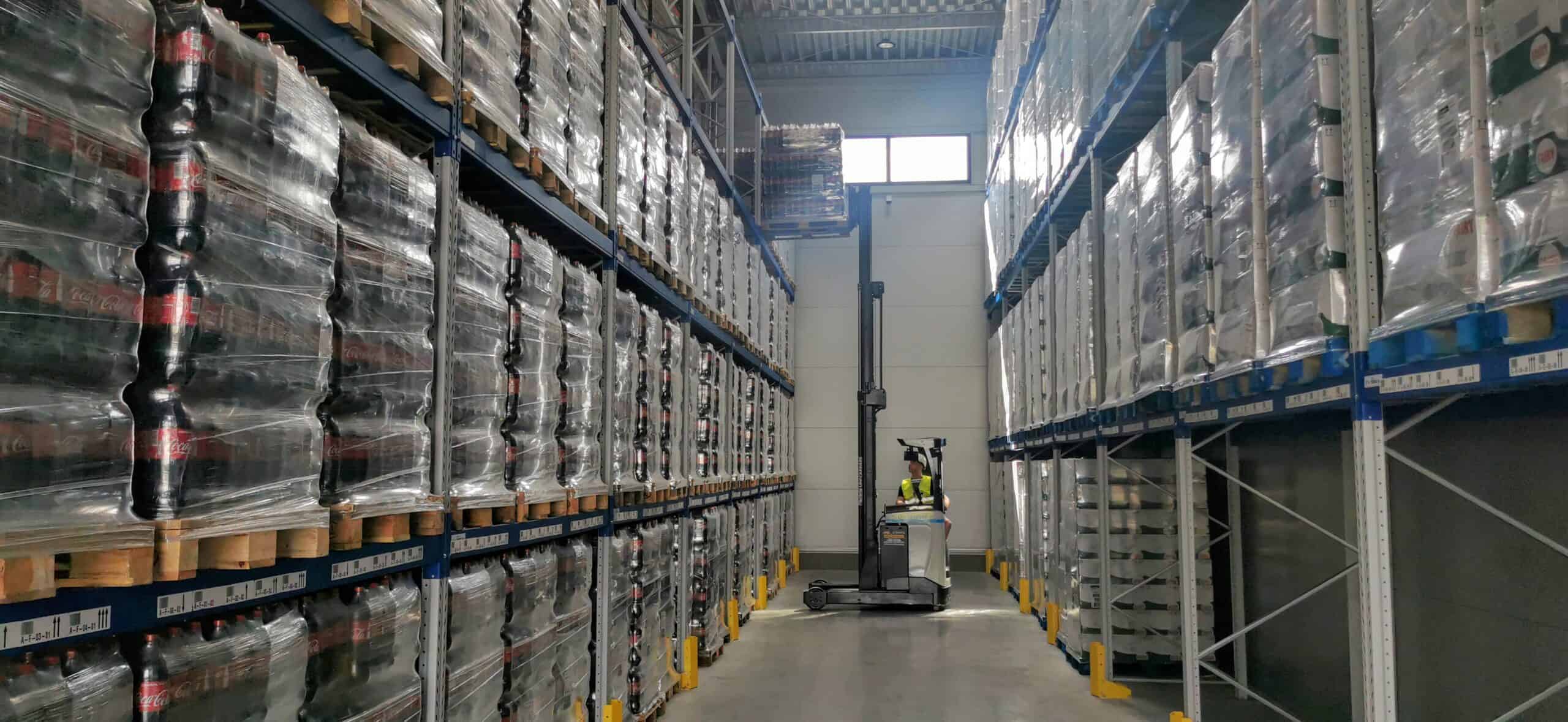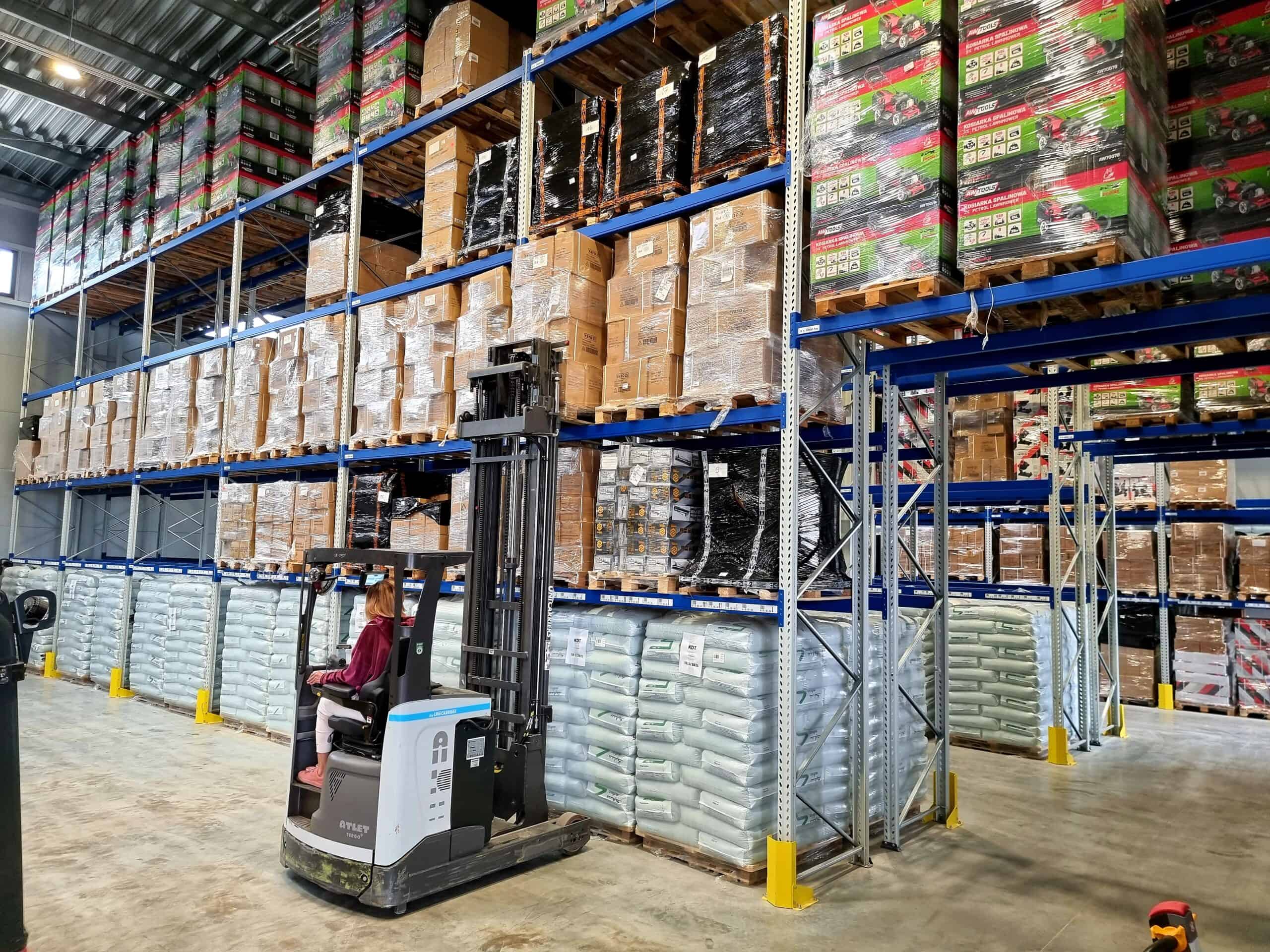I think that everyone should know the rules of food storage, and here is their Decalogue.
The certificate of entry in the register of establishments subject to official control of the state sanitary inspection bodies is the basis, without it there is no question of storing food products. After obtaining the entry, we begin to act:
1. Check the delivery. Always check the quality of products and packaging when delivering goods.
Means of transport can affect the quality of foodstuffs, which is why it is so important that they are kept in good technical and hygienic condition, preventing contamination and allowing the proper health quality of the transported products to be maintained. They must have a cargo area adapted to the type of foodstuffs transported, and a structure allowing easy maintenance of cleanliness and order and disinfection.
The person receiving the product should always check the condition of the goods received and refuse to accept them if the goods do not meet the relevant standards.
Before accepting food for sale or food storage warehouse, the recipient should check:
– the conditions of transport, including the cleanliness of the means of transport and packaging, the time of transport and other conditions affecting the health of the foodstuffs transported and the manner of loading to prevent contamination,
– the documentation relating to the foodstuffs, including origin and traceability, producer, date of manufacture, quantity and Lot number,
– bulk and individual packaging, in particular whether there are foreign odors, damage, dampness, packaging bombing, absence of pests, etc.,
– the labelling of foodstuffs, and in particular the date of shelf-life or the date of minimum durability, legibility and durability of the labelling.
2. Cold and dry. Keep your drinks, juices and water in a clean, cool and dry place. Do not allow products to overheat or freeze, or store them directly near heat sources (e.g. radiators).
Storage in a food storage facility at both too high and too low temperatures can affect product quality, causing loss of carbon dioxide in carbonated PET bottles, change the taste of beverages, juices and waters, precipitate or cause damage to packaging.
The recommended storage temperature for beverages, juices and water is 5-25oC. However, if the finished product specification states otherwise, the manufacturer’s recommendations shall be the overriding guidelines for the storage and storage of the product. Protect the product from freezing. A product that has been frozen cannot be sold.
It is important to ensure adequate air circulation, which will prevent excessive temperatures, humidity and pollination in the warehouse and remove contaminated air and possible odors from some finished products. Ventilation openings shall be covered with nets or other insect screens.
Storage facilities shall be equipped with devices for monitoring and recording temperature and humidity. It is recommended that the monitoring device be placed in the storage area of the products most sensitive to these factors. Monitoring devices should be placed in such a way that they can monitor the storage conditions of products depending on the storage height (in the case of high storage racks, the conditions at the ground may differ from those at the ceiling). These devices should be calibrated regularly and the readings documented.
If recharging of forklift batteries is carried out in a food storage warehouse, it must be carried out away from the storage location, in a designated location that meets all health and safety requirements.
3. Avoid sunlight. Keep drinks, juices and water out of direct sunlight.
The finished product must not be stored in places exposed to direct sunlight. If there are windows in the roof or walls of the warehouse directly above or next to stored drinks, juices and water, they should be protected from sunlight, e.g. by the use of a film with a UV filter.
Exposure to sunlight on foodstuffs, including beverages, juices and water, can lead to adverse changes in the taste, smell and appearance of products.
4. Keep the interval, not “on the floor”. Do not store the product directly on the floor. Keep your distance from the wall.
In warehouses, it is recommended to maintain a distance of about 50 cm between the walls and the rows of pallets or racks in order to maintain cleanliness and control the presence of rodents. A strip of floor with a width of about 50 cm adjacent to the walls, e.g. painted with epoxy paint with high gloss, allows easy control of the cleanliness and effectiveness of the insecticides used.
In the case of storage on pallets, the product must be stored on pallets clean and undamaged, preferably in an orderly manner.
It is good practice to arrange the products in accordance with an up-to-date warehouse plan showing the storage areas with a description of the destination, the roads of communication, the evacuation routes, the places of collection and storage of waste, the places of stopping and loading of forklifts.
Safety precautions must always be observed. Stored materials shall not obstruct or obstruct roads, roads or emergency exits.
5. Groceries separately-avoid the neighborhood of intense odors.
Drinks, juices and water-mainly in PET packaging-easily absorb foreign smells. This can cause organoleptic changes.
Beverages, juices and waters must be stored and displayed on sale away from products with an intense smell, in particular:
– chemical paints, phenolic derivatives, organic solvents, disinfectants, household chemicals and other compounds with a strong odor,
– animal feed,
– other foods, if they have an intense smell, e.g. fish, garlic.
Chemical agents and measures taken to ensure the cleanliness of storage facilities should be applied in such a way that they do not adversely affect the quality of food products stored. For example, the use of organic solvents in storage areas is unacceptable, as the contact of many solvents with PET bottles containing beverages, juices and water causes a distinct change in their odour.
Cleaning chemicals should only be stored in a properly secured room for that purpose, in packages marked visibly and allowing the identification of those substances, in accordance with separate rules. The dispensing and use of such substances should be documented and supervised by an authorised person. In a food storage facility, places should be allocated for the storage of equipment for keeping the premises and equipment clean in an amount adapted to the type and function of the premises and a supply of cleaning and disinfectants with appropriate certificates.
It is necessary to pay attention to the fungicides used for the maintenance of pallets, their intense odor very often penetrates into drinks, causing loss of quality and contamination of the product.
When repacking products, it is recommended to use a spacer between the pallet and the first layer. This protects the products from direct contact with the pallet and helps to evenly distribute the weight of the load.
In order to eliminate the possibility of contamination of beverages, juices and water by exhaust fumes, it is recommended not to use diesel combustion forklifts unless they are equipped with a soot filter.
6. Rotate the products. Use the fefo “first expires-first goes out” rule. Put the products in storage and on the shelf according to this rule.
The shorter the storage time, the lower the possibility of deterioration of the product under the influence of environmental factors. The basis of good storage practices is compliance with the FEFO (first expire – first out) rule – according to which the product with the shortest shelf life is always released from the warehouse in the first place. This rule should also be maintained on the store shelf, i.e. the oldest product should be placed at the front of the shelf.
Both in the warehouse and at the point of sale, the conditions of storage of foodstuffs, their quality and rotation of goods should be checked on an ongoing basis, so as not to allow them to expire and spoil.
7. Stick to your deadlines. Remove food items from the point of sale as soon as their “shelf life” or “shelf life” is exceeded.
Foodstuffs shall bear the date of minimum durability or shelf life. Foods placed on the market bearing an expiration date preceded by the words ‘to be consumed by:’ or a date of minimum durability preceded by the words ‘ preferably consumed before…”or” is best consumed before the end…’, may be on sale until the end of the day indicated after the word referring to that date or time limit; after that date the food may not be on the market.










